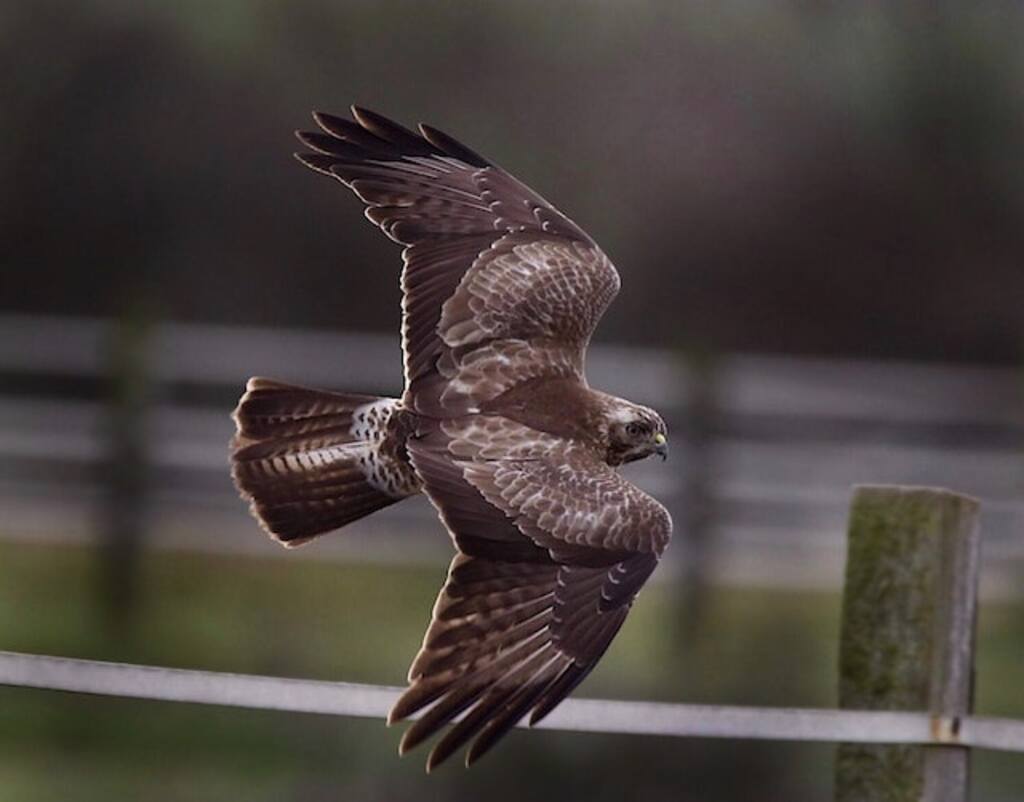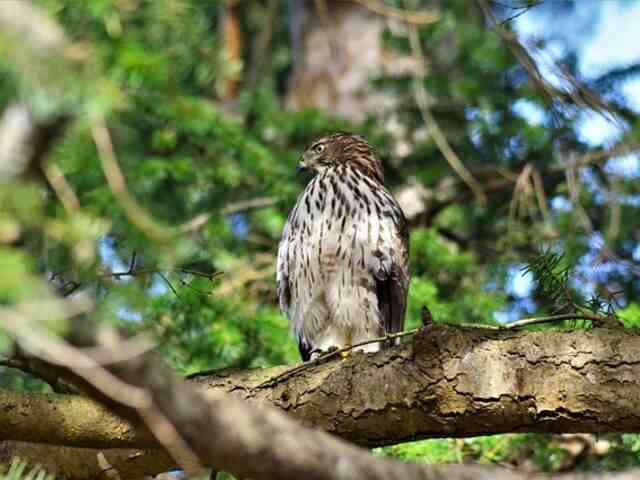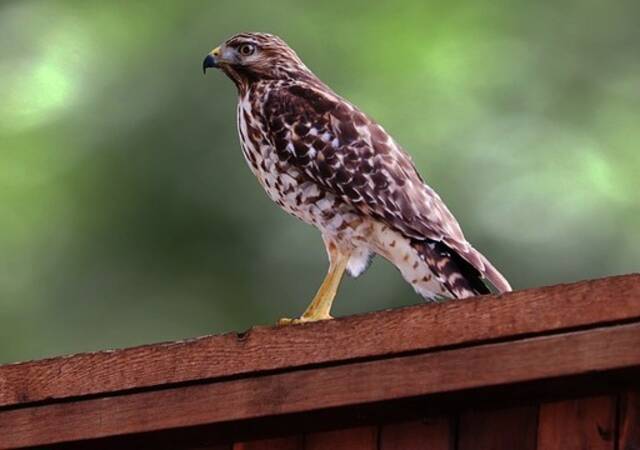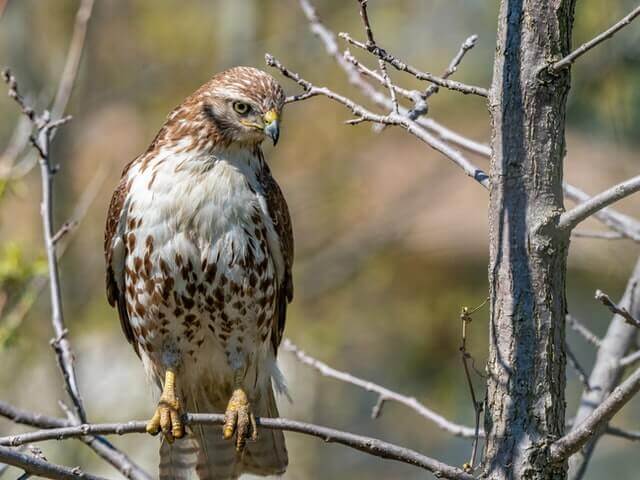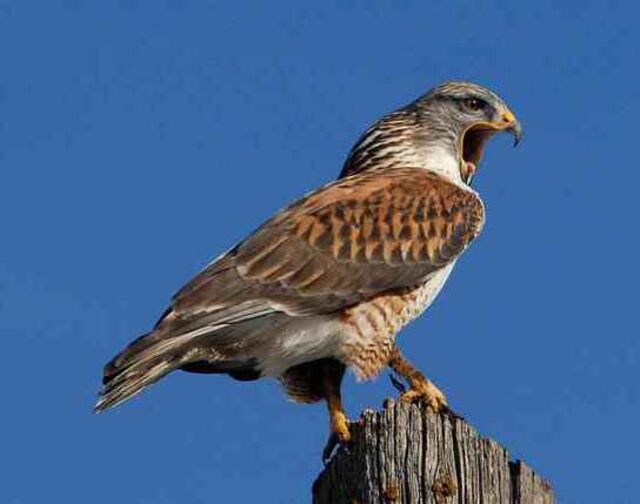Are hawks secondary consumers? Did you know that hawks play a crucial role in the food chain as secondary consumers?
According to recent studies, hawks are known for their hunting prowess and their ability to control populations of smaller animals.
As a result, they are considered an essential part of the ecosystem, helping to maintain the balance of nature.
As secondary consumers, hawks feed on primary consumers such as rodents, small birds, and insects.
This makes them an important link in the food chain, as they help control the population of these smaller animals. In turn, this helps maintain the health of the ecosystem by preventing overgrazing and overpopulation.
But what exactly are primary and secondary consumers? Let’s dive deeper into the role of hawks in the food chain to find out.
Table of Contents
- 1 Introduction to the Role of Hawks in the Food Chain
- 2 The Definition of Primary and Secondary Consumers
- 3 Overview of the Diet of Hawks
- 4 Are Hawks Secondary Consumers?
- 5 The Importance of Hawks as Secondary Consumers
- 6 The Impact of Human Activities on Hawk Populations
- 7 The Role of Hawks in Human Culture
- 8 Examples of Hawk Species and Their Ecological Significance
- 9 Frequently Asked Questions
- 10 Conclusion
- 11 Author
Introduction to the Role of Hawks in the Food Chain
Exploring the hierarchy of who eats whom in the food chain, we can gain insight into the important role that certain animals play.
Hawks, as predators, play a crucial role in maintaining ecological balance. They are secondary consumers, meaning they feed on primary consumers such as rodents, insects, and small mammals.
As secondary consumers, hawks are an important part of the food chain, as they help regulate the population of their prey.
Without hawks, the population of primary consumers would increase, leading to a decrease in the availability of resources and ultimately affecting the entire ecosystem.
Understanding the predator-prey relationships and the role of hawks as secondary consumers is essential in comprehending the delicate balance of nature.
With this knowledge, we can appreciate the importance of every animal in the food chain and the impact they have on the environment.
Moving forward, let’s delve into the definition of primary and secondary consumers and how they contribute to the food chain.
The Definition of Primary and Secondary Consumers
As you read about the different levels of the food chain, you can almost hear the rumbling of the stomachs of the animals that rely on others for survival.
Primary consumers, also known as herbivores, are the first level in the food chain, consuming only plants for sustenance.
Secondary consumers, on the other hand, are carnivores that feed on other animals. Hawks, being carnivorous birds of prey, fall into the category of secondary consumers.
They occupy a higher trophic level in the food chain and rely on other animals as their source of food.
These levels are important in understanding the flow of energy in ecosystems and how it is passed on from one organism to another.
By consuming secondary consumers, hawks are able to obtain the necessary nutrients for their survival.
Understanding the distinction between primary and secondary consumers is crucial in comprehending the complexity of food chains.
With this knowledge, we can further explore the diet of hawks and how they fit into the larger ecosystem.
Overview of the Diet of Hawks
You’ll discover what makes up the diet of these fierce birds of prey and get a glimpse into their eating habits.
Hawks are carnivorous birds that hunt during the day, using their sharp talons and beaks to catch their prey.
They are opportunistic hunters, meaning they will eat whatever prey is available to them. Their diet consists of small mammals, birds, reptiles, and insects.
Hawks’ hunting techniques vary depending on the type of prey they are targeting.
For example, they may use a stoop, which is a high-speed dive, to catch a bird in midair, or they may use their stealth and patience to catch a small mammal on the ground.
Hawks are also selective in their prey selection, choosing the weakest or most vulnerable individuals to hunt.
This helps to maintain a healthy balance in the ecosystem by removing sick or injured animals from the population.
With their role as top predators, hawks play an important role in the food chain as secondary consumers.
Are Hawks Secondary Consumers?
Yes, hawks are considered secondary consumers in most ecosystems. As predatory birds, they primarily feed on smaller animals like rodents, reptiles, birds, and insects.
Secondary consumers occupy the second level in the food chain and obtain energy by consuming primary consumers.
Hawks play a crucial role in regulating populations of their prey species and contribute to the overall balance of ecosystems they inhabit.
The Importance of Hawks as Secondary Consumers
Don’t underestimate the impact these fierce birds have on our ecosystem – without them, we’d be left with an unbalanced and unhealthy environment.
Hawks are important secondary consumers that help regulate the populations of their prey, which range from rodents to reptiles to other birds.
They keep the food chain in check and prevent overpopulation, which can lead to destruction of vegetation and other species.
Additionally, hawks play an important role in maintaining a healthy biodiversity by controlling the spread of invasive species.
It’s no wonder that conservation efforts are underway to protect these birds of prey, as their decline would have significant consequences on the ecosystem.
By supporting hawk conservation efforts, we can ensure that our environment remains healthy and balanced for future generations.
However, human activities such as habitat destruction, pollution, and hunting pose a significant threat to hawk populations.
It’s important that we take action to mitigate these impacts and preserve the vital role that hawks play in maintaining a healthy ecosystem.
The Impact of Human Activities on Hawk Populations
Human activities are like a wrecking ball to the delicate balance of our ecosystem, and the decline of hawk populations is a clear indicator of the damage we’re causing.
Hawks are secondary consumers, meaning their food source comes from primary consumers like rodents and insects, which are affected by human interference.
Habitat loss, pollution, and hunting all contribute to the decline of hawk populations.
Conservation efforts are crucial to protect these important predators and maintain a healthy ecosystem.
As humans, we must take responsibility for our impact on the environment and work towards sustainable practices to preserve the natural world.
It’s time to recognize the significance of hawks and their role in the delicate balance of our ecosystem. Now, let’s explore the role of hawks in human culture.
The Role of Hawks in Human Culture
Discover the fascinating influence hawks have had on our culture throughout history. Hawks have long been admired for their grace, power, and keen eyesight.
They have played prominent roles in many mythologies, often representing strength, courage, and freedom.
In Native American culture, hawks are considered messengers of the spirit world, and their feathers are used in sacred rituals.
In Ancient Egypt, hawks were associated with the god Horus, who was depicted with the head of a hawk.
Today, hawks continue to inspire us, and their conservation efforts have become increasingly important as their populations face threats from habitat loss and other human activities.
By protecting hawks and their habitats, we can ensure that future generations will be able to enjoy these magnificent birds.
With their important ecological significance, hawks serve as a reminder of the interconnectedness of all living things and the importance of preserving our natural world.
Examples of Hawk Species and Their Ecological Significance
Now that we’ve talked about the role of hawks in human culture, let’s dive into the ecological significance of hawk species diversity.
Did you know that there are over 270 species of hawks in the world? Each species plays a crucial role in their respective ecosystems as secondary consumers, feeding on smaller animals like rodents and insects.
Some species, like the red-tailed hawk, are even known to control the population of invasive species.
Unfortunately, many hawk species are facing threats such as habitat loss and hunting. This is where hawk conservation efforts come into play.
Organizations around the world are working to protect these magnificent birds and their habitats, ensuring that they continue to play their important ecological roles.
With that in mind, let’s move on to the conclusion and final thoughts on the role of hawks as secondary consumers.
Frequently Asked Questions
What is the lifespan of a hawk?
If you’re curious about the lifespan of a hawk, there are a few factors to consider. Hawks typically live for around 10-20 years, but this can vary based on a number of factors.
Some of the biggest factors affecting hawk lifespan include habitat loss, hunting and trapping, and environmental pollution.
In recent years, there have been many conservation efforts aimed at protecting hawks and their habitats.
These efforts include things like habitat restoration, captive breeding programs, and educational campaigns to raise awareness about the importance of hawks and other birds of prey.
By supporting these conservation efforts and learning more about these majestic creatures, you can help ensure that hawks will continue to thrive for generations to come.
How do hawks mate and reproduce?
So you’re curious about how hawks mate and reproduce? Well, hawks have some interesting reproductive strategies.
First off, let’s talk about their mating behavior. Hawks are monogamous, meaning they mate with only one partner for life.
When it comes time to mate, the male hawk will perform an aerial display to attract the female. Once the female accepts, they will mate in midair.
Now, on to their reproductive strategies. Hawks build nests in high places like trees or cliffs, and the female will typically lay around 2–4 eggs.
Both parents take turns incubating the eggs and caring for the hatchlings. It takes about a month for the eggs to hatch and another month or so for the young hawks to fledge.
And there you have it, the fascinating world of hawk mating and reproduction.
What is the average size of a hawk’s territory?
If you’re curious about the average size of a hawk’s territory, it really depends on the species. Hawks are known to be territorial birds, and their hunting habits play a big role in determining the size of their territory.
For example, a Cooper’s hawk, which preys on smaller birds and mammals, may have a territory of around 10-20 acres, while a red-tailed hawk, which hunts larger prey such as rabbits and squirrels, may have a territory of up to 4 square miles.
Hawks are incredibly skilled hunters and fiercely protect their territories, giving them a sense of freedom and independence in the wild.
How do hawks communicate with each other?
Hawks are fascinating creatures that communicate with each other through a combination of vocalizations and body language.
These communication methods are crucial in predator-prey relationships, as hawks are secondary consumers in the food chain.
Vocalizations can range from high-pitched screeches to low-pitched calls, and body language includes different postures and gestures such as head movements and flapping wings.
Through these methods, hawks can signal danger, alert others to potential prey, and even establish territories.
Understanding how hawks communicate is not only interesting, but also important in preserving their habitats and the ecosystems they’re a part of.
So if you’re curious about how these intelligent birds interact with each other, keep your eyes and ears peeled for their unique vocalizations and body language.
What are the different types of feathers that hawks have, and what are their functions?
Did you know that hawks have a variety of feather adaptations that help them with their hunting techniques?
For example, their primary feathers are used for steering and maneuvering, while their tail feathers help with balance and braking.
Additionally, hawks have special feathers called ‘filoplumes’ that act as sensory receptors, allowing them to feel and adjust the position of their other feathers mid-flight.
These feather adaptations, along with their sharp talons and keen eyesight, make hawks incredibly skilled hunters.
As you watch these magnificent birds soar through the sky, remember the unique feather adaptations that allow them to thrive in their natural habitat.
Conclusion
Congratulations! You now know that hawks are indeed secondary consumers in the food chain. They play a crucial role in maintaining balance and stability in the ecosystem by controlling populations of prey animals.
Hawks are skilled hunters and have a varied diet, which includes small mammals, birds, reptiles, and even insects. They are also important indicators of the health of the environment.
Unfortunately, human activities such as deforestation and pollution have had a negative impact on hawk populations.
It’s important for us to take steps to protect these magnificent birds and their habitats. Just like a hawk soaring through the sky, they’re a symbol of freedom and majesty, and their presence in our world is invaluable.
In conclusion, hawks are vital secondary consumers in the food chain, and their ecological significance cannot be overstated.
They’re a gift from nature, and we must do our part to preserve and protect them for future generations.
So, the next time you see a hawk soaring overhead, take a moment to appreciate the beauty and wonder of these magnificent creatures and remember how important they are to our world.
Like a hawk, let your spirit soar free and wild!

